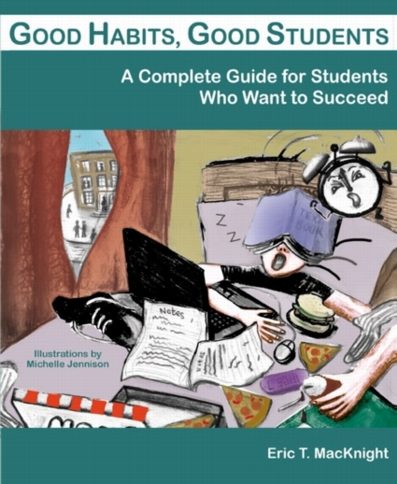1. Everyone wants to feel okay.
When we don’t feel okay, we do something to make ourselves feel better. There are good ways, and not-so-good ways, to do this. Good ways include going for a walk, calling a friend on the telephone, eating an apple. Not-so-good ways include making somebody else feel bad, gorging on sweets, or . . . sticking a needle in your arm. Just about all of us make ourselves feel better by using our strengths. If we are good athletes, we go with that. If we are very beautiful, or handsome, we rely on that. If we are very clever, we use that. This natural tendency to go with our strengths can, however, cause problems. For example, the star athlete may stop working at her studies because she doesn’t find the sort of easy, immediate success in class that she does on the playing field. Or the very clever person may alienate the people around him by constantly reminding them how smart he is. How do you make yourself feel okay?
2. Pain is your friend.
Pain is that little guy jumping up and down, waving his arms, trying to get your attention. “Hey, you! Look at me! You’ve got something to deal with here, and something to learn! Pay attention!” People who are not really our friends will give up on us. If we push them hard enough, even people who really love us will finally give up on us. Not pain. You can try to ignore him, run away from him, drown him in booze (or any other distraction you prefer) but he stays right there until you pay attention to him. He is trying to make you pay attention to some sort of problem, to fix it if you can and to learn from it so it doesn’t keep repeating itself. So then the question is . . .
3. What is your problem?
We all have problems. What’s yours? How can you fix it? How can you stop yourself from running into it again and again and again? This is the real work of being human, of growing and learning and developing. Think of a baby, just learning to walk. His problem is, he can’t stand up. Or if he does manage to stand up for a moment, he loses his balance and falls down. Once, twice, three times, ten times. It frustrates him, makes him angry, makes him want to scream, makes him want to cry. If he stops trying and just cries, it will take him much longer to learn to walk. The solution to his problem is patient, determined effort; the only way he can fail is to stop trying. Lots of other problems are just like this—but not all of them. In other cases, doing the same thing over and over again will get you nowhere. In still other cases the problem may be something we cannot change or control. So, what is your problem, exactly, and how can you best deal with it? That’s what you need to find out.
4. We can all use help.
That baby will learn to walk a bit sooner if somebody gives him a hand to hold onto and keep him steady on his feet. You and I will learn from our problems and move on, instead of staying stuck on them, if we get some help from someone who has been there before us, who can see the situation more clearly than we can, who can point us in the right direction. It might be a friend, a family member, a counselor or teacher or therapist or doctor, or a neighbour. Find someone who can help you, and ask for help. If the first person you ask is not the right person, keep searching: someone out there is able to help you and will be happy to do it. Because we all want to feel okay, and one of the best ways to feel okay is to help someone else.

